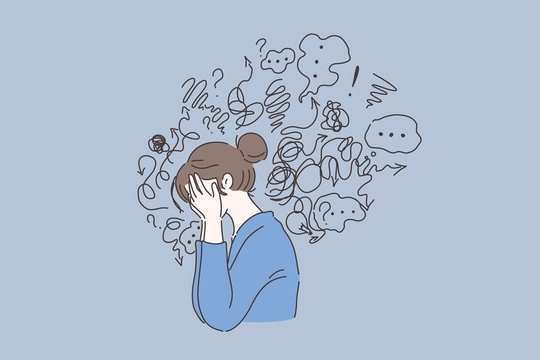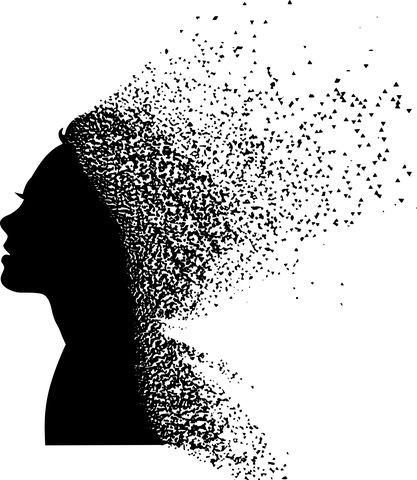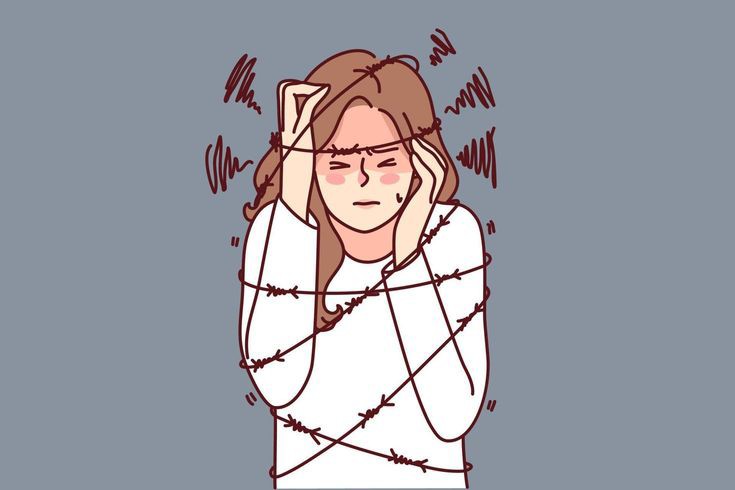These distortions.
It are irrational thought patterns that contribute to heightened anxiety levels. Understanding these cognitive distortions is crucial for both individuals grappling with anxiety and those supporting them.

*Common Cognitive Distortions:*
1. **Catastrophizing:** This distortion involves expecting the worst possible outcome, often blowing situations out of proportion. For someone with anxiety, a minor setback might be perceived as a catastrophic event.
2. **Overgeneralization:** Individuals prone to overgeneralization draw sweeping conclusions based on limited evidence. For instance, a single negative experience may lead to the belief that similar situations will always yield negative outcomes.
3. **Black-and-White Thinking:** Also known as all-or-nothing thinking, this distortion involves perceiving situations in extremes without acknowledging the middle ground. An individual may view themselves as either a complete success or an utter failure, leaving no room for nuance.
*Impact on Mental Well-being:*
Cognitive distortions exacerbate anxiety by distorting reality and fostering negative thought patterns. They contribute to a heightened sense of threat, intensifying emotional and physical symptoms associated with anxiety. Recognizing and challenging these distortions through cognitive-behavioral therapy (CBT) can be a powerful tool in managing anxiety.
**Section 10: Cognitive-Behavioral Therapy (CBT) for Anxiety:**

CBT is a widely used therapeutic approach that targets cognitive distortions and maladaptive behaviors associated with anxiety. It aims to restructure negative thought patterns, promote healthier coping mechanisms, and gradually desensitize individuals to anxiety-inducing situations.
*Components of CBT for Anxiety:*
1. **Cognitive Restructuring:** This involves identifying and challenging irrational thoughts, replacing them with more balanced and realistic alternatives. By addressing cognitive distortions, individuals can change their perception of stressors and reduce anxiety.
2. **Exposure Therapy:** Gradual exposure to anxiety triggers in a controlled environment allows individuals to confront and overcome their fears. This process helps desensitize the emotional response associated with anxiety, fostering resilience over time.
3. **Mindfulness Techniques:** Incorporating mindfulness practices, such as meditation and deep-breathing exercises, helps individuals cultivate present-moment awareness. Mindfulness can be a powerful tool in managing anxiety by promoting relaxation and reducing the impact of intrusive thoughts.
*Long-Term Benefits of CBT:*
CBT not only provides immediate relief from anxiety symptoms but also equips individuals with skills to manage future challenges independently. It fosters a proactive approach to mental well-being, empowering individuals to navigate life's uncertainties with resilience and adaptability. Some people have social anxiety.

**Conclusion** :
In understanding anxiety, recognizing the role of cognitive distortions sheds light on the intricate relationship between thought patterns and emotional well-being. Addressing these distortions through therapeutic interventions like CBT can be instrumental in breaking the cycle of anxiety and fostering lasting positive change. By acknowledging the impact of cognitive distortions, individuals can embark on a journey towards a more balanced and resilient mental state.Certainly! Cognitive distortions, deeply intertwined with anxiety, mold perception and exacerbate negative thought patterns. Recognizing their influence is pivotal for effective intervention. Cognitive-Behavioral Therapy (CBT) emerges as a beacon, offering tailored strategies to dismantle these distortions, paving the way for lasting mental well-being and resilience. Cognitive distortions, deeply intertwined with anxiety, mold perception and exacerbate negative thought patterns. Recognizing their influence is pivotal for effective intervention. Cognitive-Behavioral Therapy (CBT) emerges as a beacon, offering tailored strategies to dismantle these distortions( THE END).



You must be logged in to post a comment.